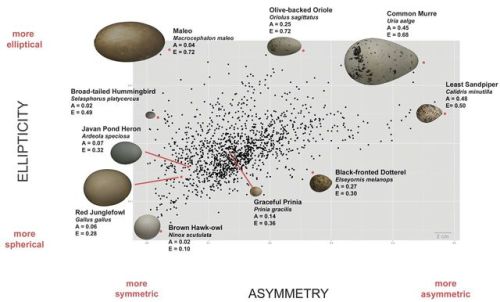
In 2017, a comprehensive study looked into why eggs are shaped like, well, eggs. Why are eggs ellipses, and not spheres? Why are they often asymmetrical with one pointier end and one rounder end? These were the questions the scientists set out to answer.
The research team gathered together a large dataset of 49,175 images of eggs produced by 1,400 species, both living and extinct, and examined exactly how elliptical and how asymmetrical each egg was (and made a pretty graph, see above). The scientists also paid attention to the parents’ nesting behaviors, clutch sizes, diet, and flight ability. Previously, it was suggested that eggs are pointy on one end to prevent them from rolling away from the nest or to make laying easier for females. But the study did not support that.
Instead, they found multiple lines of evidence that the shape evolved to simply fit better inside the parent’s aerodynamic body. The stronger, better fliers had the longest and pointiest eggs. Meanwhile, some flightless birds (like ostriches) hatch from squat orbs.

